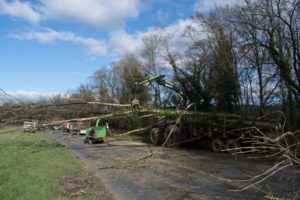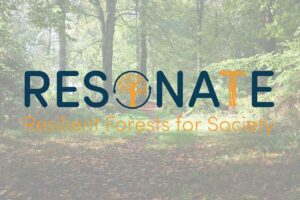Jonathan Callis MICFor, Senior Asset Engineer at Network Rail, attended Scotland’s Ash Dieback Risk Group meeting, coordinated by Scottish Forestry, last month in Edinburgh.
With the help of a newly formed Ash Dieback Risk Group, Scotland is gearing up to deal with a significant increase in damage likely to arise from ash dieback over the coming years, the brunt of which is likely to be felt by local authorities and those responsible for the safety of transport networks, utilities, buildings and areas with high public access.
The Group, which brings together expertise from local authorities and the forestry, transport, utilities and nature conservation sectors, will play a key role in helping to develop policies on ash dieback for the Scottish Government. The Tree Council has been commissioned by Scottish Forestry to assist in this process following the Council’s extensive experience in creating an Action Plan ‘Toolkit’ – and associated guidance – for England and Wales.
Ash dieback, caused by the fungus Hymenoscyphus Fraxineus (more commonly known as ‘Chalara’), is likely to be the most significant tree health issue affecting the UK since Dutch elm disease. First detected in England and Scotland in 2012, damage levels in England, even on older ash trees, have escalated significantly over the last two to three years. That trend is now starting to emerge in Scotland and is likely to lead to the decline or death of the majority of its 11 million mature ash trees over the next decade and create significant liabilities and costs for those who own or manage land.
A recent report from Oxford University indicated that the cumulative cost of the disease to the UK will be in the order of £15 billion over the next 100 years, half of which will arise in the next decade. About two-thirds of those costs relate to the loss of ‘ecosystem services’ such as carbon capture, water quality and air purification, and the remainder relates mainly to landowners having to deal with dangerous trees next to roads, railways, electricity
lines, buildings and areas of high public access.
Developing an Action Plan Toolkit tailored to Scotland’s needs is one of the key purposes of the Ash Dieback Risk Group (Scotland). By providing guidance on awareness raising, planning, responses and recovery actions, the Toolkit will provide essential guidance for all those in the private and public sectors who share the collective responsibility for dealing with ash dieback in Scotland.
For further information, you can contact tree.health@forestry.gov.scot






